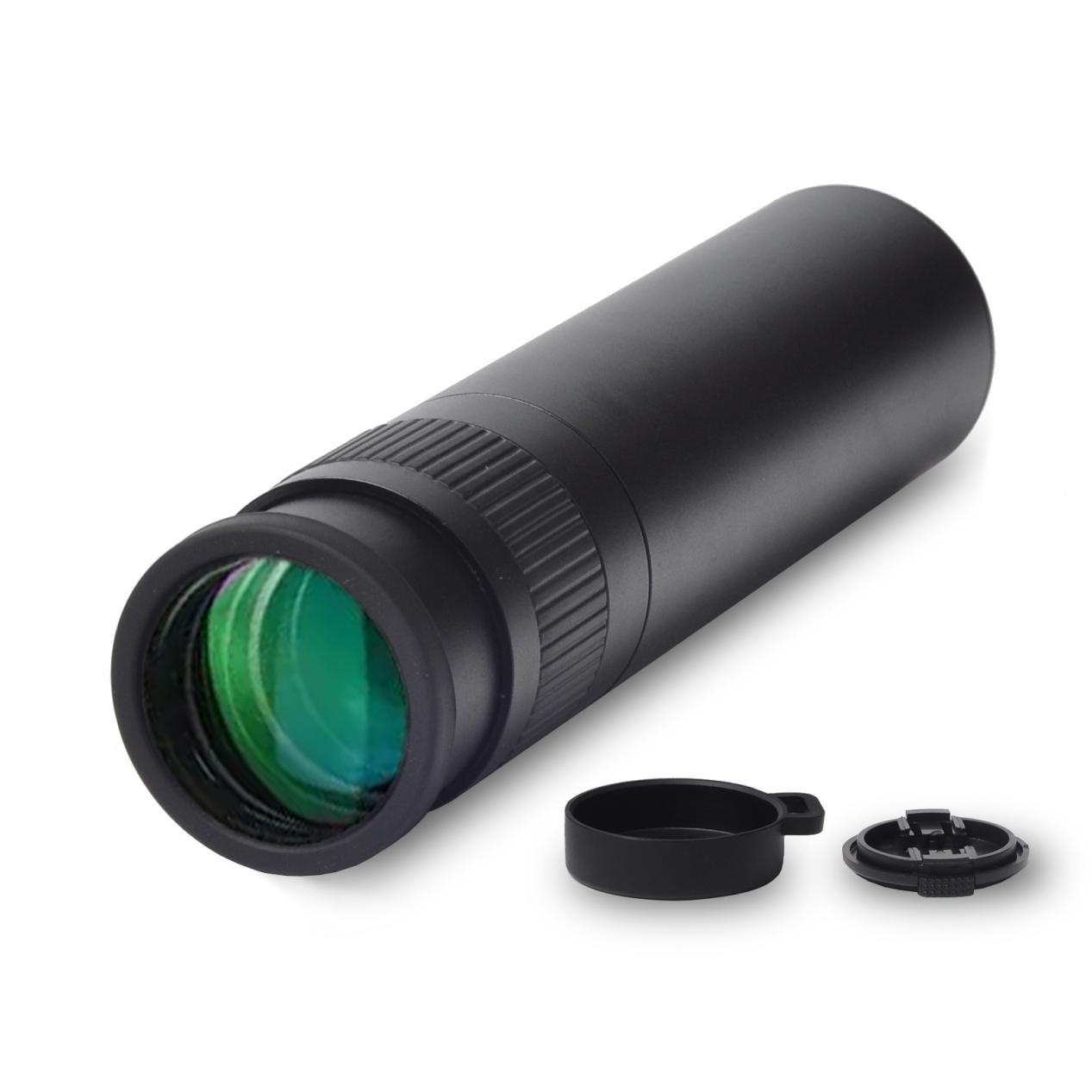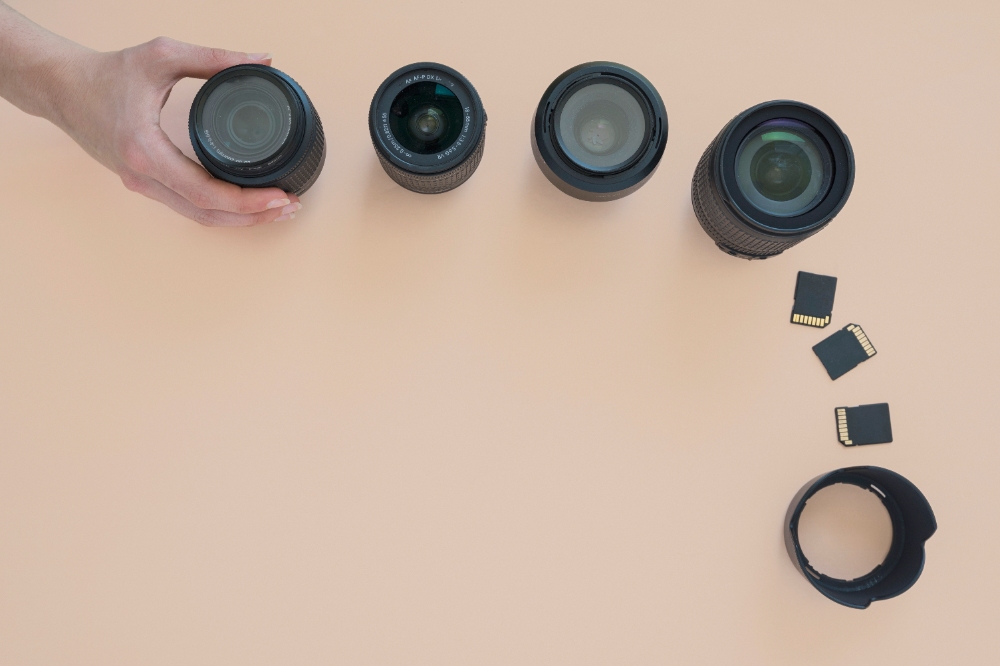
Request



Struggling to pick between a monocular and a telephoto lens? Let’s figure out which tool is best for you. Whether you love spotting wildlife, snapping photos, or going on outdoor adventures, this guide breaks it down nice and easy.
Picking a monocular or telephoto lens? You gotta know their basic differences. It’s key to making a smart choice. Both bring faraway stuff closer, but they work differently and fit different needs.
A monocular is like a tiny telescope with one barrel. It uses optical magnification to make far-off things look bigger when you peek through it. Light comes in through the objective lens, goes through lenses and prisms, and hits your eye. You see stuff right away! Most monoculars have fixed magnification, usually 6x to 12x, depending on the model.
Telephoto lenses, though, are add-ons for cameras or smartphones. They’re built to take pictures of faraway things. They stretch the camera’s focal length, so stuff looks way closer in your photos. Unlike monoculars, you need a camera or phone to use them. They make pictures, not just views you see with your eyes.
Monoculars are super duper handy for carrying around. They’re small and light, perfect for folks who hike or love outdoor stuff. The Hemusun 822, for example, is made for EDC (Everyday Carry) fans and fits right in your pocket or a tiny bag. It’s great for quick looks at stuff on the go.
Telephoto lenses come in all sizes. Smartphone ones are pretty small, but pro camera lenses can be big and heavy. How easy they are to carry depends on what you’re doing and how much zoom you need. If you’re hiking, a big lens might be a hassle compared to a monocular.
Monoculars and telephoto lenses act differently in various lights and places. The Hemusun 822, for instance, is one of the smallest 20mm aperture monoculars out there. It can’t match bigger gear in things like field of view, but it’s awesome for its size.
Monoculars often shine in dim light because their bigger lenses grab more light, and they’re tuned for your eyes to see clearly. Telephoto lenses depend on your camera’s sensor and how it handles light. Some cameras do great, but others might struggle in low light compared to a monocular.
Wanna know which is best for outdoor fun? It depends on whether you want to look at stuff right away or take pics to keep.
For spotting animals or birds, monoculars are usually the way to go. They let you see far-off critters right away, no setup needed. You can track a moving deer or bird super fast. Plus, they’re quiet, so you won’t scare wildlife. They’re perfect for nature lovers who want to watch without fuss.
When you’re hiking or camping, you don’t want heavy gear. Monoculars win here—they’re light and small. You can whip one out to check out a faraway trail or spot a cool mountain view. They make landscapes pop with details you’d miss otherwise. No need for fancy camera skills, just look and enjoy!
At games or concerts, both tools have their perks. Monoculars are great for watching action live. You can zoom in on a player or singer with clear, instant views. The Hemusun 822 even has jitter elimination tech, so it’s steady whether you’re holding it, on a boat, or in a car.
Telephoto lenses are better if you wanna snap pics to share online. But watch out—some places don’t allow big camera gear. Monoculars are usually easier to bring along, no worries about rules.
Photography-wise, these tools are super different. Each has its own strengths for taking pics.
Some modern monoculars, like the Hemusun 822, can work as telephoto lens add-ons for smartphones. They’re stable and clear, and you can pop them on your phone to snap faraway details.
Regular telephoto lenses, though, are often better for photos. They’re made just for cameras, so they give sharper, clearer pictures. They usually have zoom ranges you can adjust and work great with camera focus systems.
Smartphones are a big deal now, and lots of monoculars play nice with them. The Hemusun 822, for example, comes with a photo sleeve to make phone photography easy. It’s a cool way to use one gadget for both looking and snapping pics.
Telephoto lenses are made for cameras, but some work with phones too. They’re awesome if you’ve got a fancy camera, but for phone users, a monocular with an adapter might be simpler.
If you’re new to photography, monoculars with phone adapters are super easy. The Hemusun 718, for instance, was built for phone photo fans. It can focus from 15cm to super far, making it a top pick for beginners. It’s even friendlier than some camera macro lenses
Telephoto lenses can be trickier. They need more setup and know-how, especially with pro cameras. For casual folks, a monocular’s simple snap-and-go vibe is hard to beat.
Before you pick, think about a few things to match your needs and likes.
What’s your big goal? If you love watching stuff live—like birds, sports, or views—a monocular is usually better. It’s quick and gives you clear sights right away. If you’re all about taking great pics to share, a telephoto lens might be your pick.
Monoculars are often cheaper, especially since they can do double duty as phone lenses. The Hemusun 822, though, has a complex design for outdoor fans, so it’s a bit pricier to make. Still, it’s small and light, perfect for carrying.
Telephoto lenses, especially pro ones, can cost more and be heavier. If you want something tiny, a monocular or a phone telephoto lens is the way to go.
Both can be tough, but it depends on the model. Good monoculars are built for rough outdoor use. Telephoto lenses might need extra care, like covers, to stay safe in bad weather. Think about where you’ll use them most.

Picking a great brand like Hemusun Optical Instrument Co., Ltd. makes a big difference for quality and performance.
Hemusun Optical Instrument Co., Ltd. is all about making top-notch optical gear. They focus on high-quality products for all kinds of users. Their stuff is built to last and work great, no matter what you’re doing.
Hemusun has cool tech and smart designs. The Hemusun 822, for example, uses a “near-focus stabilized image” system with a tiny prism and gyroscope to keep views steady. It runs a “smart control” algorithm to cut out shakes, making everything super clear.
They’ve got fancy tools and strict checks to make sure every product is top-notch. That means you get gear you can trust.
Hemusun Optical Instrument Co., Ltd. offers great support. They’ve got warranties, repairs, and tech help to keep your gear working. Quick service means you can fix problems fast and keep using your monocular or lens for years.
Which tool makes faraway stuff look better? It’s all about what you need and like.
Monoculars are awesome for quick looks, like spotting a deer or checking a far-off trail. They’re ready to go right away, perfect for fast-moving moments. Telephoto lenses shine when you want to save a memory, like a great concert shot. They’re best for planned photo sessions where you can take your time.
Monoculars are small, easy to carry, and work for both looking and phone pics. They’re a great deal but might not take photos as sharp as telephoto lenses. Their zoom is usually fixed too.
Telephoto lenses give amazing photo quality and adjustable zoom. But they’re bigger, pricier, and don’t let you see stuff live without a camera.
Your lifestyle picks the winner. Love hiking and spotting stuff on the spot? Go for a monocular. Crazy about taking awesome photos? A telephoto lens is your buddy. Hybrid monoculars with phone adapters, like the Hemusun 822, give you both worlds!
Monoculars and telephoto lenses both bring far stuff closer, but they’re best at different things. Monoculars are super for quick, live views during adventures, wildlife spotting, or events. They’re light and easy to use. Telephoto lenses are tops for snapping high-quality pics, perfect for photo fans who want great shots.
Your choice depends on what you need, how much you wanna spend, and how you live. Hybrid gear, like monoculars with phone adapters, can give you the best of both. Hemusun Optical Instrument Co., Ltd. makes awesome options like the Hemusun 822 and 718 that mix viewing and photography in one cool package.
Q1: Can I use a monocular with my smartphone for photography?
Yep! Lots of monoculars, like the Hemusun 822, come with smartphone adapters to act as telephoto lenses. They’re great for phone photography fans, with add-ons like a photo sleeve to make snapping pics super easy.
Q2: What magnification should I choose for a monocular?
For most stuff, 8x to 10x is a sweet spot. It’s strong but steady. Higher zooms like 12x can be shaky without help. The Hemusun 822 has anti-shake tech, making high zoom stable and easy to carry.
Q3: Are monoculars suitable for kids or beginners?
Totally! Monoculars are simple since you only use one eye. The Hemusun 718 is super friendly for newbies, even easier than some camera lenses. They’re cheap and tough, great for kids too.